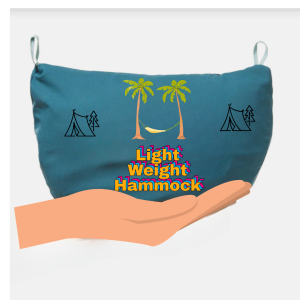
Whether you’re planning to nap in the shade or swap your tent for a lightweight sleep system, hammocks have become must-have camping gear. But how to choose a hammock that’s right for your outdoor needs? With dozens of models, materials, and accessories available, finding the perfect one can be a challenge.
This guide will walk you through all the key factors to consider so you can confidently hang out—literally.
1. Choose the Right Hammock Size
One of the first decisions to make is whether you need a single or double hammock:
-
Single Hammocks: Generally 4–5 feet wide. Lighter and easier to pack—ideal for solo hikers or anyone prioritizing weight savings. Good for lounging, but a bit snug for overnight sleep.
👉 Shop lightweight single hammocks on Amazon
👉 Shop lightweight single hammocks on Decathlon
-
Double Hammocks: Typically 5–6 feet wide. Roomier and more comfortable for one person, with the option to snuggle up with a partner. Slightly heavier but worth it if comfort is king.
👉 Shop double hammocks on Amazon
👉 Find double hammocks at Walmart
👉 Explore double hammocks at Decathlon
Quick Tip: Make sure the hammock is at least 2 feet longer than your height for the best sleeping experience.
2. Think About End Use
Where and how you’ll use your hammock should guide your decision:
-
Backpacking: Look for ultralight models made with thin, durable fabrics (like 30-denier nylon). Prioritize weight, packability, and fast setup.

👉 Shop ultralight backpacking hammocks on Amazon
👉 Find backpacking hammocks at Walmart
👉 Explore lightweight hammocks at Decathlon
-
Car Camping & Lounging: Heavier-duty hammocks with more space and comfort. Weight isn’t a concern, so you can opt for extras like padded straps or built-in bug nets.
👉 Shop car camping hammocks on Amazon
👉 Find camping hammocks at Walmart
3. Understand Hammock Materials
Hammocks come in different fabrics and denier ratings (a measure of thickness and durability):
-
Higher Denier (e.g., 70D): Tougher and longer-lasting—better for frequent use and rugged conditions.
-
Lower Denier (e.g., 30D): Lightweight and compact—great for minimalist backpacking but may wear faster.
Video: How to Choose a Hammock
4. Don’t Forget Essential Accessories
To set up and sleep comfortably, you’ll need a few add-ons:
✅ Suspension System (Tree Straps)
-
Straps should be at least 0.75 inches wide to avoid harming tree bark.
-
Some hammocks come with carabiners, but straps are often sold separately.
👉 Shop hammock tree straps on Amazon
👉 Find hammock straps at Walmart
✅ Underquilt or Sleeping Pad
-
Cold air flows under the hammock, so insulation underneath is essential.
-
Underquilts hang below your hammock and provide better warmth than pads, which get compressed under your weight.
👉 Shop hammock underquilts on Amazon
👉 Find underquilts and pads at Walmart
✅ Rain Tarp
-
A tarp provides shelter from rain and wind. Look for one that’s slightly wider than your hammock for full coverage.
👉 Shop rain tarps for hammocks on Amazon
👉 Find hammock tarps at Walmart
✅ Bug Net
-
Choose a 360° bug net to protect all sides (especially underneath).
-
Opt for no-see-um mesh to keep even the smallest pests out.
5. Consider a Hammock Tent or Sleep System

Want to replace your tent altogether?
Hammock Sleep System Includes:
-
Hammock
-
Tree straps
-
Underquilt
-
Rainfly/tarp
-
Bug net
These systems are perfect for lightweight camping in wooded areas. They’re compact and leave less impact on the ground. Just make sure you’re camping somewhere with sturdy trees.
How to choose a hammock (Pros and Cons)
| Pros | Cons |
|---|---|
| No need for level ground | Needs trees (not usable above the treeline or in open desert) |
| Lightweight and versatile | Limited space for gear storage |
| Doubles as a camp seat | Typically designed for one person |
6. Setup Tips for Comfort and Safety
To get the best out of your hammock:
-
Aim for a 30° angle on the straps for optimal sag and support.
-
Lie diagonally to flatten your body and reduce back arching.
-
Use tree-friendly straps and always follow Leave No Trace principles.
Final Thoughts: How to Choose a Hammock for Your Adventures
Choosing a hammock isn’t just about comfort—it’s about your camping style. If you’re heading deep into the backcountry, go light and compact. If you’re chilling by the campfire, comfort and durability matter more.
Once you find the right hammock setup, you’ll wonder how you ever camped without one.